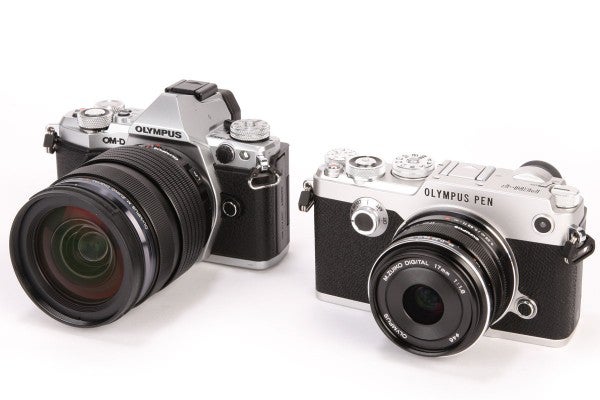Confused about which of Olympus's high end CSCs is better for you? We look at the main differences to help you decide.
Olympus PEN-F vs OM-D E-M5 II: 8 key differences
Olympus’s two similarly-priced high-end compact system cameras look pretty similarly specified at first glance. They may have very different physical designs, but both feature built-in electronic viewfinders, fully-articulated touchscreens, and 5-axis image stabilisation. To help you work out which one is better for you, we’ve rounded up the key differences between them.
1) Sensor
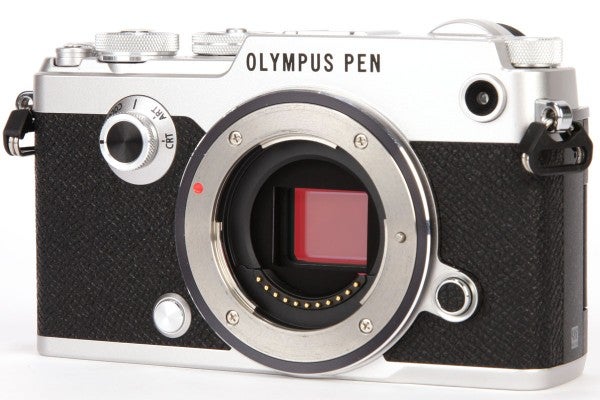
The PEN-F is the first Olympus CSC to use a 20MP sensor
Probably the biggest update in the newer model, the Olympus PEN-F uses a 20-million-pixel sensor rather than the 16-million-pixel chip in the Olympus E-M5 II. It seems a reasonable bet that this is the same Sony unit we saw in the Panasonic GX8, in which it gave impressive results. Expect small but useful improvements in image quality; aside from the increased resolution, the latest tech should give improved dynamic range and slightly lower noise at high ISOs.
Both cameras also include high-resolution multi-shot modes, with the PEN-F giving increased resolution commensurate with the sensor pixel count, of 50-million pixels compared to 40-million-pixels.
2) Viewfinder
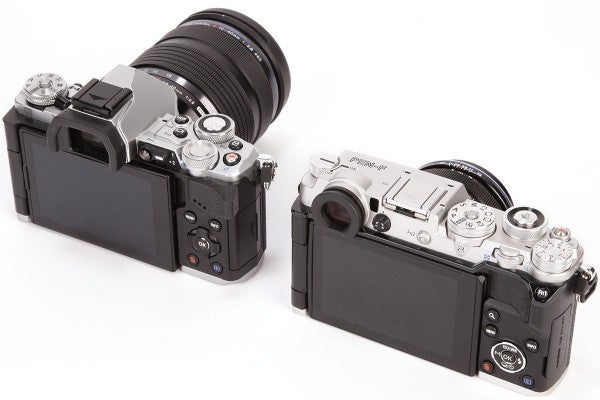
The PEN-F’s viewfinder is smaller than the E-M5 II’s, but equal in resolution
Both cameras sport excellent 2.36-million-dot electronic viewfinders. But the E-M5 II’s is larger, making it easier to compose your images, particularly if you shoot detailed subjects such as landscapes.
3) Weathersealing
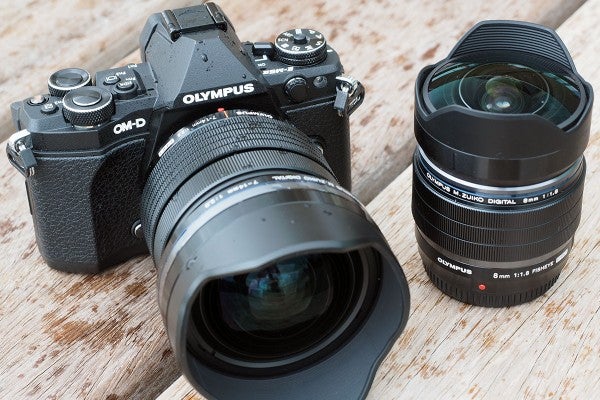
Unlike the PEN-F, the OM-D E-M5 II is weathersealed
If you plan to use your camera outdoors in less-than-perfect weather, it’s worth bearing in mind that whille the E-M5 II is weathersealed, the PEN-F isn’t. So the older model has the edge for landscape work in this respect.
4) Control layout
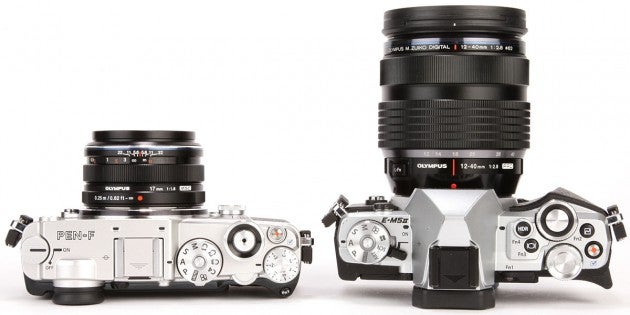
The PEN-F is Olympus’s first CSC with an exposure compensation dial
While the E-M5 II can be a lovely camera to shoot with, it does need a bit of work from the user to set it up optimally. In contrast, with its exposure compensation dial and dedicated ISO/WB button, the PEN F looks better set up out of the box.
One key area where the cameras differ is focus point selection when shooting with the viewfinder. The E-M5 II uses its d-pad, whereas the PEN-F is set up to use the touchscreen. But if you’re a left-eyed shooter, you might find that your nose contacts the touchscreen, inadvertently resetting the focus point.
5) Creative processing
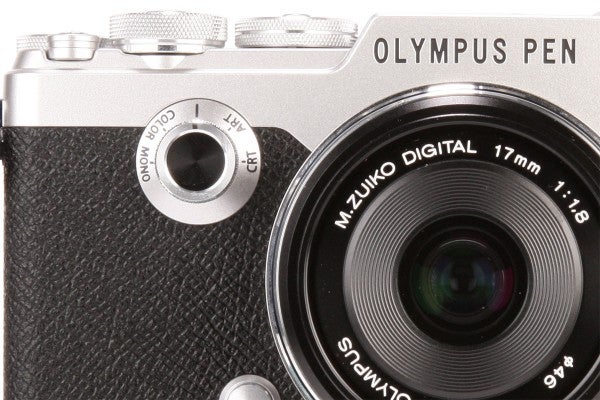
The PEN-F’s front dial gives quick access to its colour processing modes
Both cameras include Olympus’s Art Filters and Color Creator mode, allowing you to experiment with the look of your images and preview them live in the viewfinder. But the PEN-F goes a step further, with clever new colour and monochrome modes giving more control over the look of your shots. It also makes it much easier to experiment with all of these settings via a front-plate selection dial and thumb-lever control dedicated to this task.
If you like to get creative with the look of your images but don’t want to mess around sitting in front of a computer processing raw files, the PEN-F looks like a really interesting option.
6) Use with large or long lenses
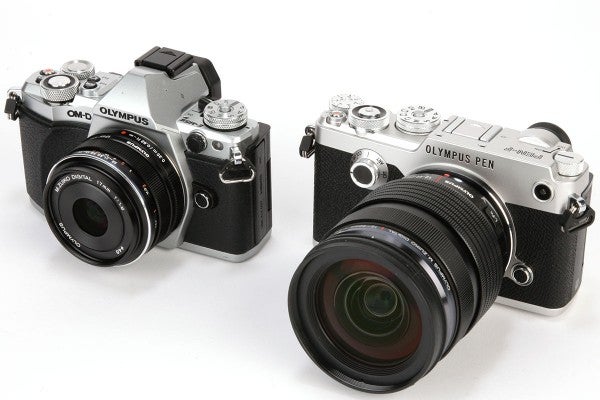
With larger lenses like the 12-40mm f/2.8 PRO, the PEN-F starts to look a little imbalanced
This is somewhat subjective, but many photographers find central viewfinders to give better balance when shooting with large lenses, particularly telephotos. The PEN-F is, in contrast, perhaps better suited for use with smaller lenses, especially primes.
7) Video
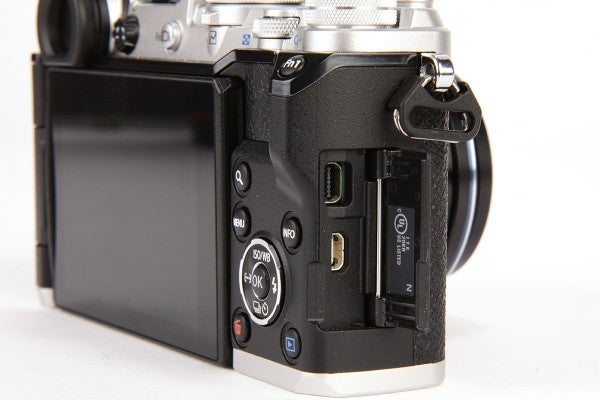
With no microphone or headphone socket, the PEN-F is less suitable for video recording
The two cameras have similar specifications when it comes to video recording, along with Olympus’s impressive 5-axis image stabilisation. However there’s a big difference regarding sound recording: the E-M5 II can accept an external microphone via its built-in 3.5mm stereo socket, and headphones using the optional vertical grip. But the PEN-F has neither.
8) Design
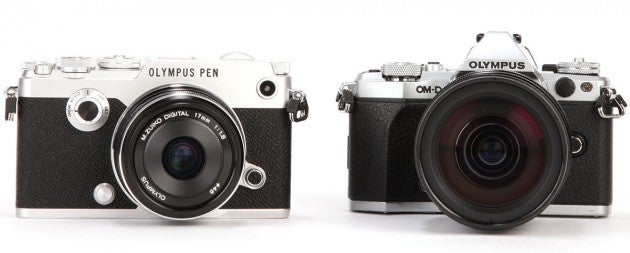
The stunning PEN-F is perhaps less intimidating to your subjects than the E-M5 II
With its retro SLR-like design, the E-M5 II is a handsome camera. But the PEN-F is simply stunning. If you strongly value design and retro good looks, then few cameras on the market come anywhere close.
If you like to take pictures of people a lot, in my experience they often react differently to different camera designs. The small, good-looking PEN-F may well elicit a more natural response from your subjects compared to the angular, more ‘professional-looking’ E-M5 II.
Which should I buy?
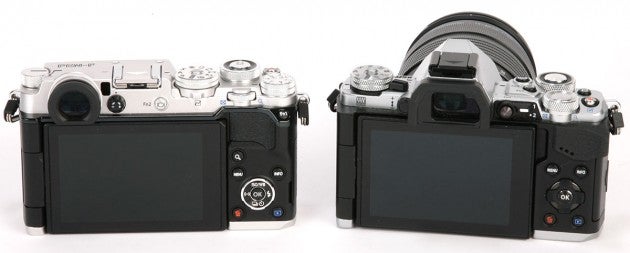
The flat-bodied PEN-F contrasts with the SLR-stlye E-M5 II
So between the new Olympus PEN-F and the older OM-D E-M5 II, which should you buy? Well the E-M5 II is probably a better match to Olympus’s f/2.8 PRO-range zooms, and its weathersealing makes it more suitable for all-seasons outdoor shooting and landscape photography. The PEN-F, though, looks like it should be great for creative photographers who like to shoot portrait or street or photography with small, unobtrusive primes, or experiment with both exposure settings and in-camera processing. Its newer 20MP sensor should deliver better image quality, too.





